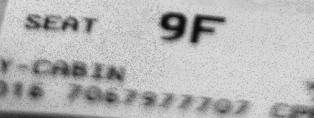

A year ago, this column addressed the demise of paper. Yet as I take pen in hand to write this, it seems that the question is worth another look. By “pen,” I refer to a machine (called Pulse Pen) that writes, with ink, on paper. But it also has two gigabytes of memory, two microphones and a fluorescent display (see www.Livescribe.com for an amazing 10-minute demonstration). It captures everything it writes, and can capture everything it hears.
Years ago, we abandoned paper for tasks like to-do lists, phone messages and note-taking—digital information was so much more usable. But that leap came not from the PDA that houses our data, but rather from the addition of a handful of features, specifically backup, search and sharing. These three features overcame the significant annoyance of carrying a PDA, learning to use it, charging batteries and dealing with tech support.
So, I'm stunned to find that when you add search, backup and sharing to the pen, it is now the tool I use to capture notes, create todo lists and write messages. It's better—it's right there, ready to go and easy to use, especially here on a flight to LaGuardia.
This doesn't address the Pulse Pen’s most amazing, and scariest element—the ability to record audio and index it to the page. What the pen doesn't get, the microphone does. In meetings, this lets me pay more attention to people and less to paper. Opening a laptop to take notes intimidates people—it evokes the image of a permanent record, and perhaps a court reporter. But a spy pen is equally scary. People are wary of leaving a perfect record without knowing it. Surely etiquette will evolve.
This is still an early-adopter item—which is a polite way of saying that it doesn’t always work as expected. Early adoption runs in my blood. About a million years ago, another CRE with my last name explained the early adopter mantra to me, “…having this a year or two earlier, while it still costs a fortune, will save me more than its cost.” This is the same person who taught his then 11-year-old son to calculate standard deviations by hand, just so there would be someone else in the house who knew how cool it was that his calculator could do the same task automatically.
To be sure, at $395, the HP-80 was truly useful in 1973, but part of its appeal to my father was its ability to provoke a conversation, and because it was a swell toy. He wasn’t worried about acquiring a nerdish reputation or he wouldn’t have bought the Compucorp Counselor a few years earlier—and people expect their counselors to carry a few unusual tools.
Not all early adoptions go well. Yard sales are full of tech items that worked, strictly speaking, but turned out not to matter, or were simply too “early.” Often they were brilliant solutions to problems about which no one cared. It remains to be seen whether this new toy will be a market success, but it does address one burning issue. In an airplane full of laptops, I’m the only person writing who still has room on his tray for a soda.
Copyright 2009 - Noah Shlaes